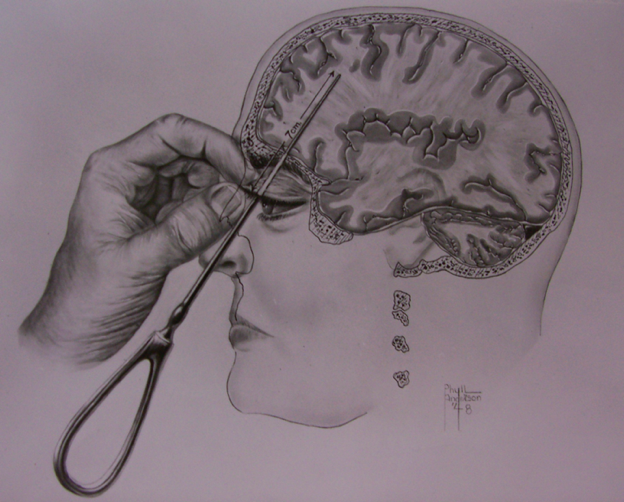a public lecture by Miriam Posner
April 15th, 2015, 4:30 P.M – 6:00 P.M.
103 Hillcrest
Walter Freeman, the world’s foremost proponent and practitioner of lobotomy, was also an obsessive photographer. He almost invariably took photos of his patients before and after surgery, often tracking them down years after the operation to capture their images. These cross-country trips to photograph patients, which Freeman called head-and-shoulder hunting expeditions, consumed the physician during the last years of his career.
What do we do with an archive like this? Its contents can tell us volumes about the medical epistemology that made lobotomy thinkable. But how can we avoid replicating Freeman’s own rhetorical moves, in which the photographs were mobilized as evidence during scientific presentations?
During this talk, Posner will describe the visual rhetoric that defined the scientific moment from which lobotomy emerged, and demonstrate some digital methods for placing them in context. Against the background of this history, Posner asks, what is the contemporary digital scholar’s responsibility for working with, writing about, and displaying images of human beings in distress?
Miriam Posner is Coordinator and Core Faculty Member of the Digital Humanities program at the University of California, Los Angeles.
